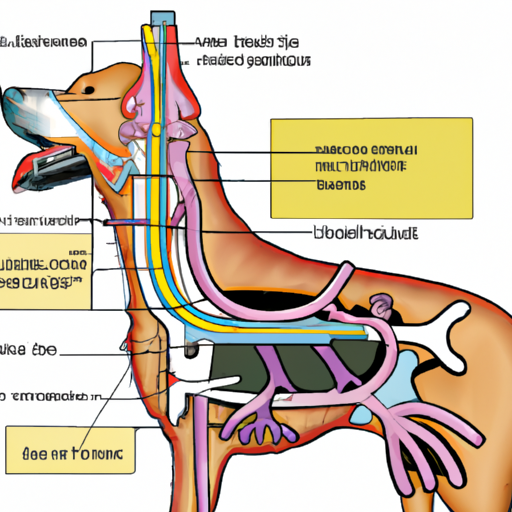Introduction
Understanding how your furry friend breathes can be a fascinating exploration into their physiology and a crucial component of their overall health. As a caregiver to your pet, your knowledge is their first line of defense.
1. The Basics of Canine Respiration
Dogs breathe in a similar way to humans, but there are some key differences. The air your dog inhales through their nose or mouth travels down the trachea and into the lungs, where oxygen is absorbed, and carbon dioxide is expelled.
-
The Nose: Dogs primarily breathe through their noses. Their nasal passages are designed to filter, warm, and humidify the air before it reaches the lungs.
-
The Mouth: Dogs also breathe through their mouths, especially when panting to cool themselves down. Unlike humans, dogs do not sweat and use panting as a means of thermoregulation.
-
The Trachea: This is the airway that connects the throat to the lungs. It is lined with cilia, tiny hair-like structures that help to trap and expel foreign particles.
-
The Lungs: Here, oxygen is absorbed into the bloodstream, and carbon dioxide is expelled.
| Part | Function |
|---|---|
| Nose | Filters, warms, and humidifies the air |
| Mouth | Helps in breathing, especially when panting |
| Trachea | Connects the throat to the lungs |
| Lungs | Absorbs oxygen, expels carbon dioxide |
2. The Science Behind Panting
Panting is a dog’s way of cooling down. They do this by rapidly breathing in and out, which allows water to evaporate from the tongue, throat, and lungs. This evaporation carries heat away from the body, helping to lower their temperature.
3. Respiratory Rates and What’s Normal
Your dog’s respiratory rate can be a key indicator of their health. A normal resting respiratory rate for a dog is between 15 to 30 breaths per minute. If you notice that your dog’s breathing is consistently above or below this range, it may be a sign of a health problem and should be checked by a vet.
4. When to Worry About Your Dog’s Breathing
Just like with humans, changes in your dog’s breathing can be a sign of an underlying health problem. Some signs to watch out for include:
- Rapid breathing at rest
- Difficulty breathing
- Wheezing or coughing
- Blue or pale gums
If you notice any of these signs, it’s essential to seek veterinary attention immediately.
5. Enhancing Your Dog’s Respiratory Health
There are several ways you can help ensure your dog’s respiratory health:
-
Regular Exercise: This helps to keep your dog’s lungs healthy and strong.
-
A Balanced Diet: Good nutrition is essential for overall health, including respiratory health.
-
Regular Vet Checkups: Regular checkups allow your vet to spot any potential respiratory problems early.
FAQs
1. Q: Can dogs breathe through their skin like humans sweat?
A: No, dogs primarily breathe through their nose and mouth and use panting to cool themselves down.
2. Q: What is a normal breathing rate for a dog?
A: A normal resting breathing rate for a dog is between 15 to 30 breaths per minute.
3. Q: What should I do if my dog is breathing rapidly at rest?
A: If your dog’s breathing is consistently above or below the normal range, seek veterinary attention immediately.



